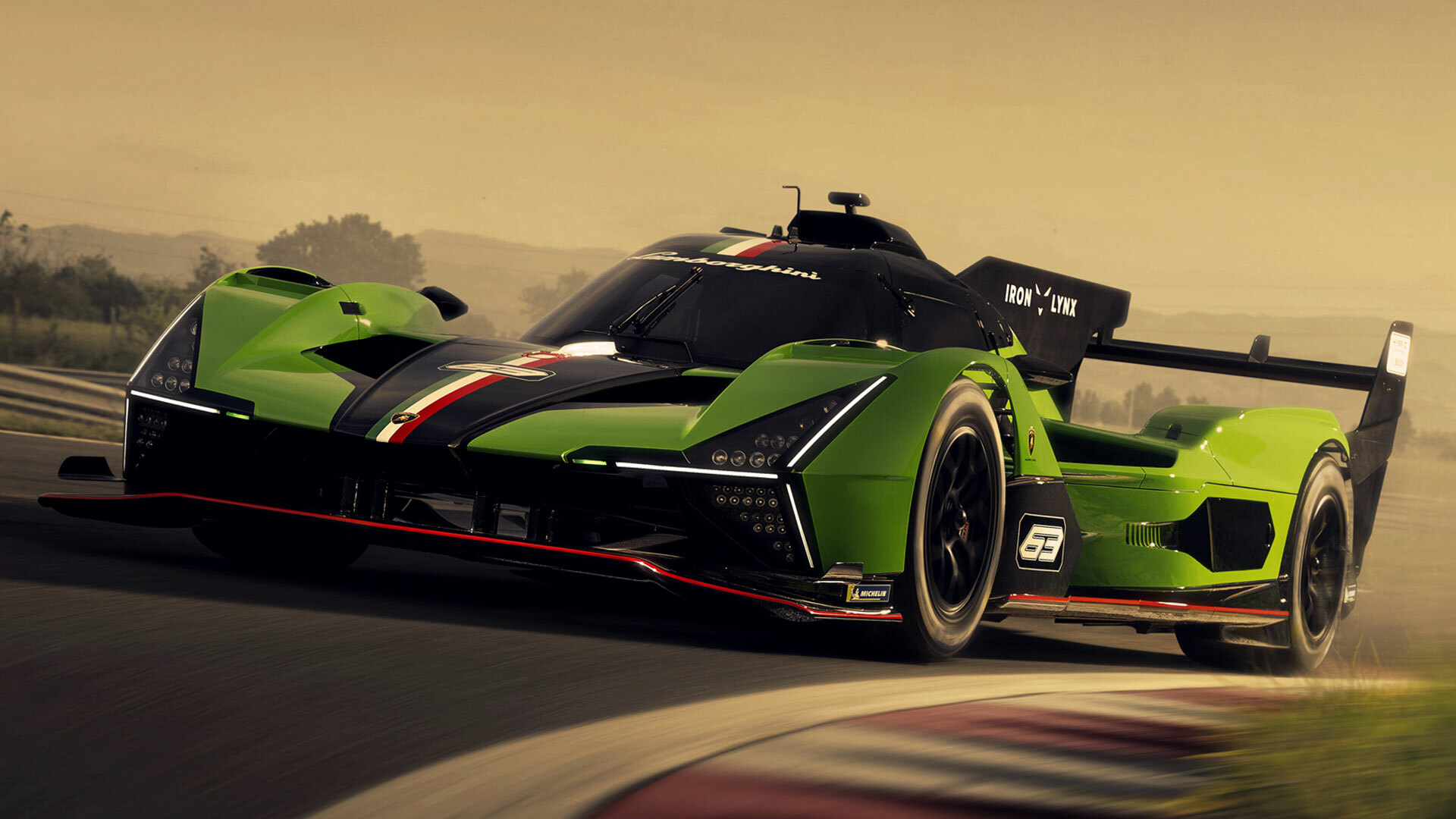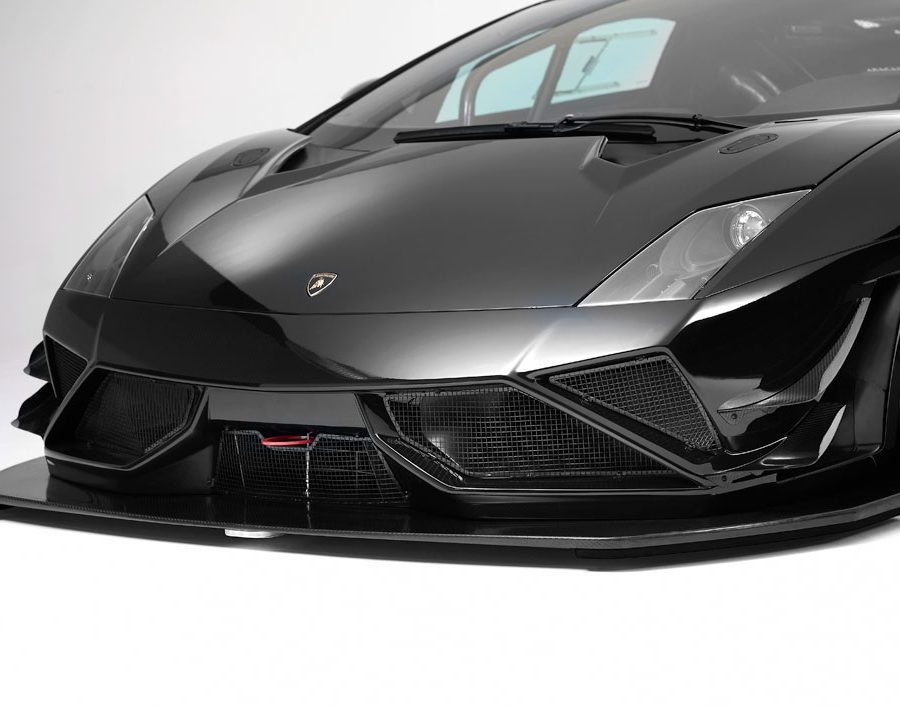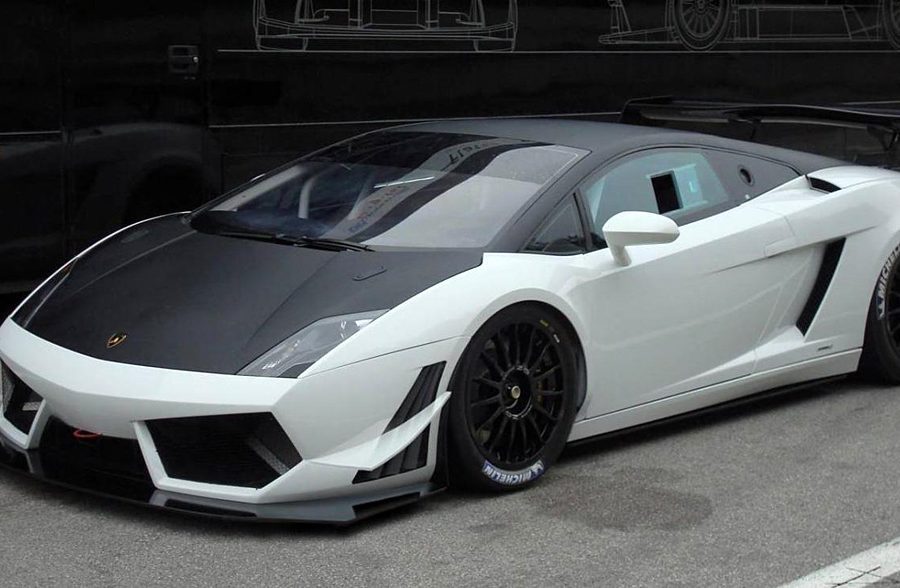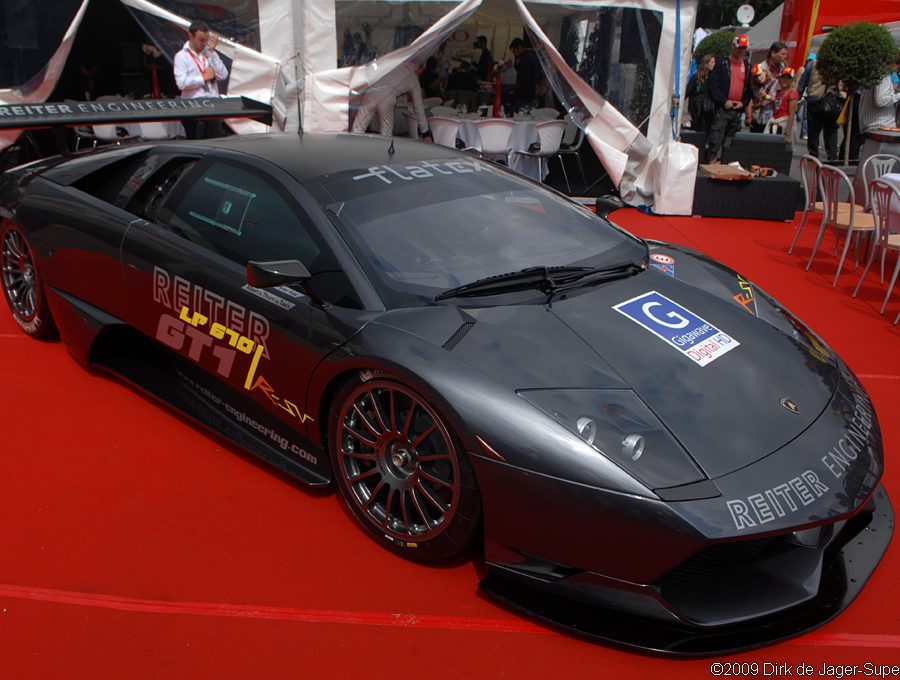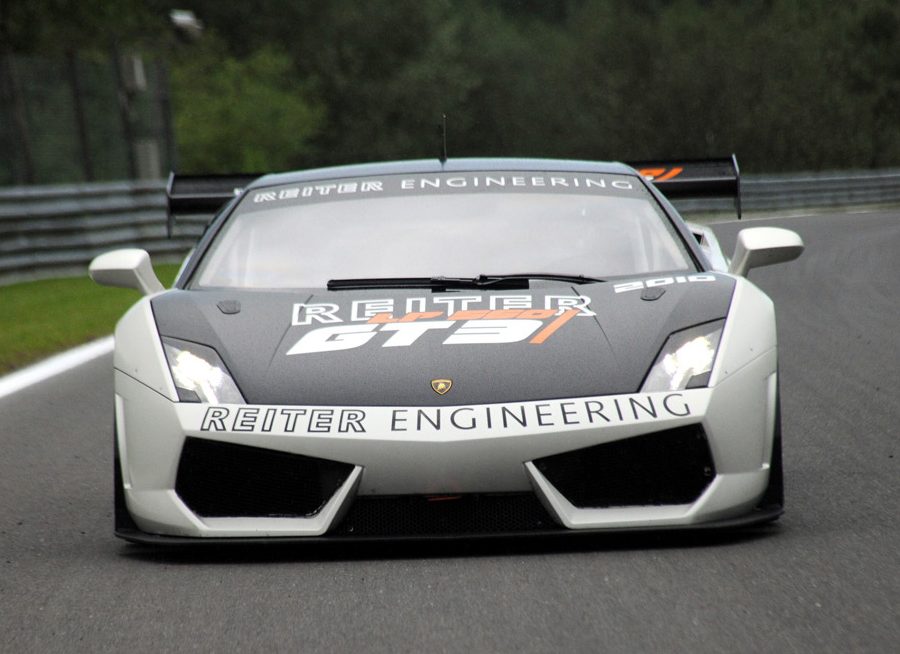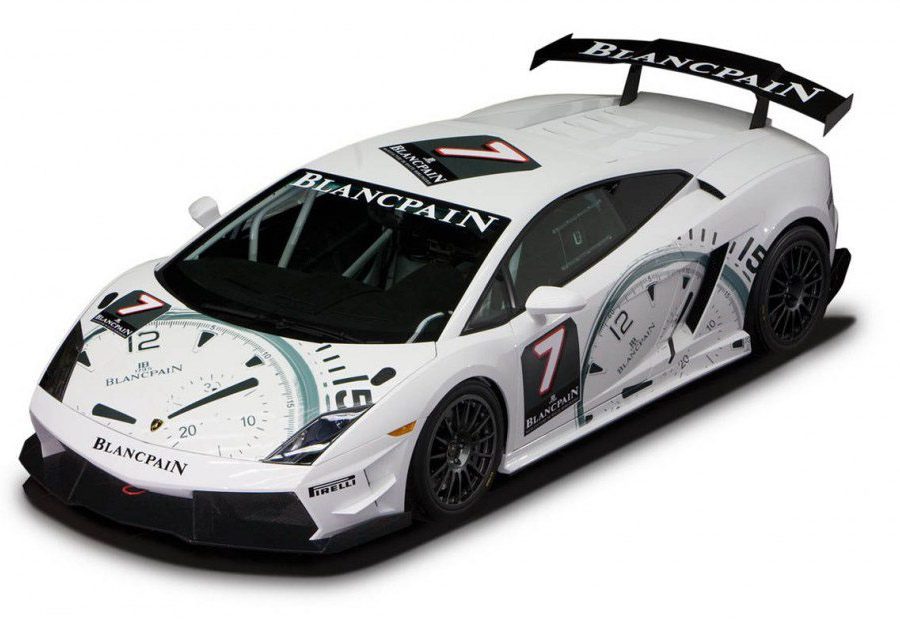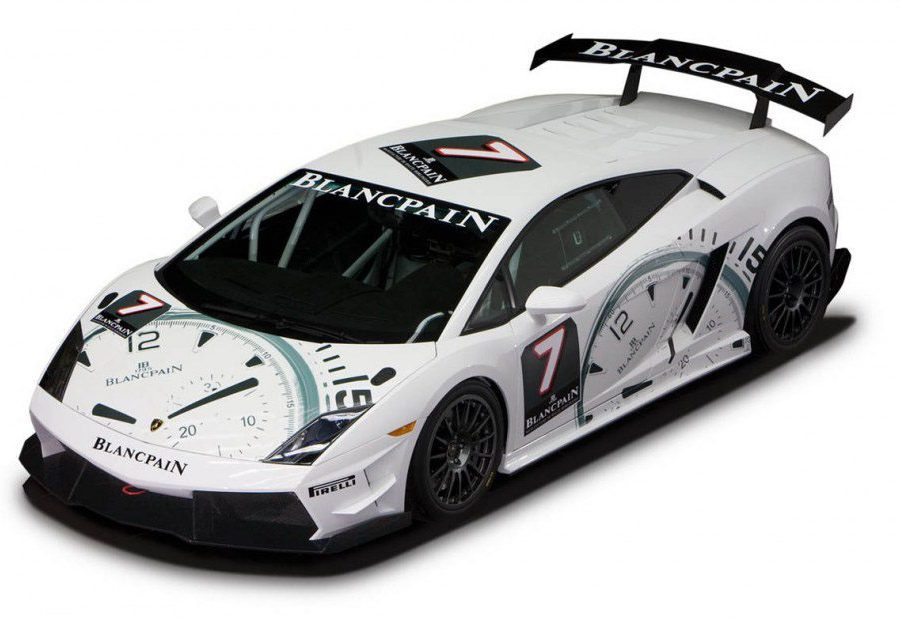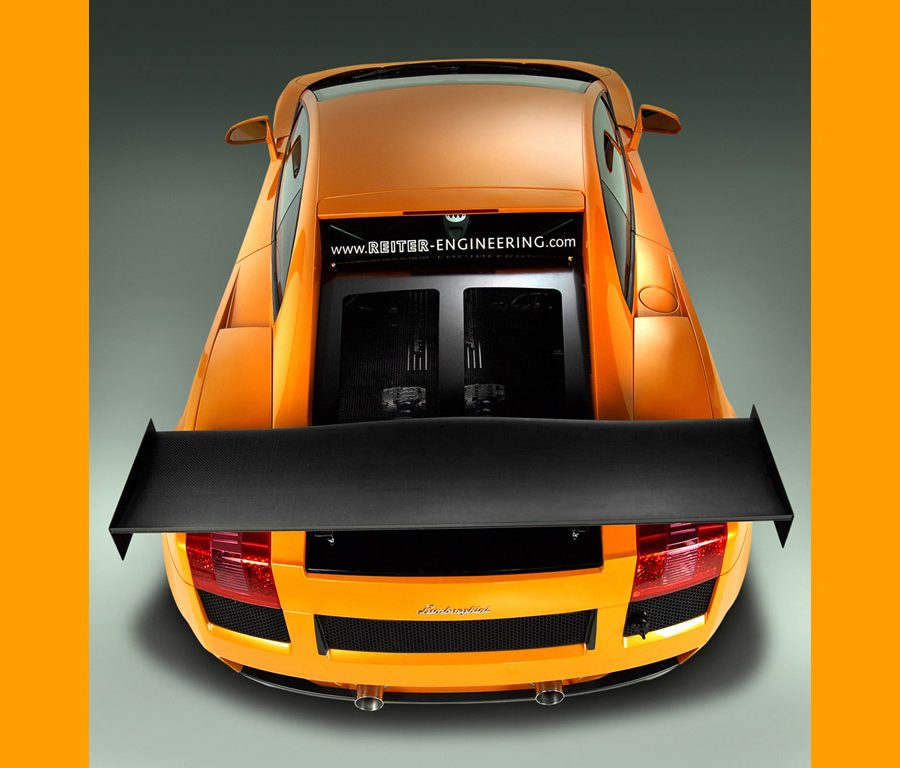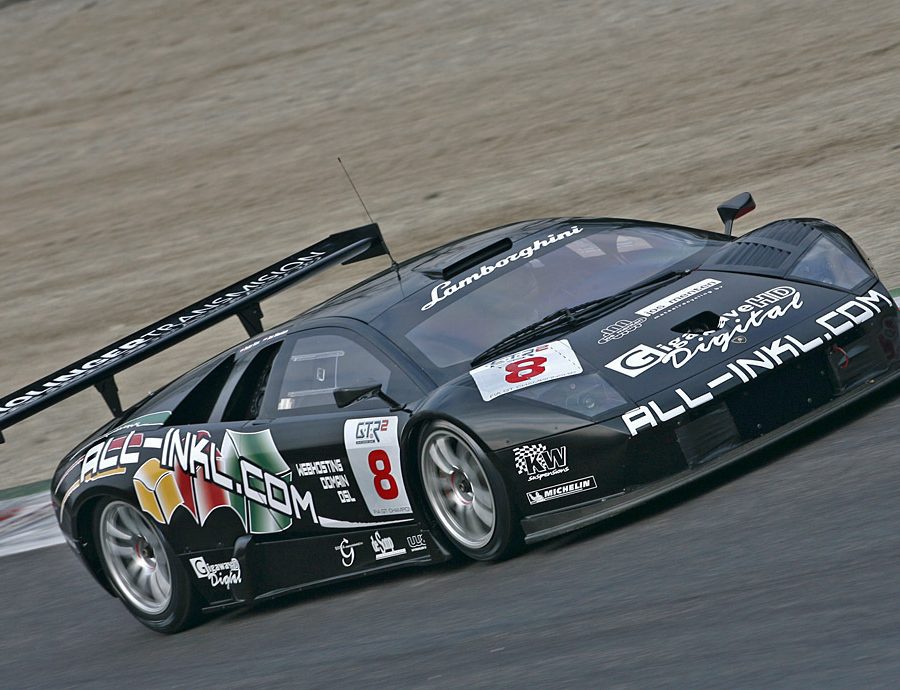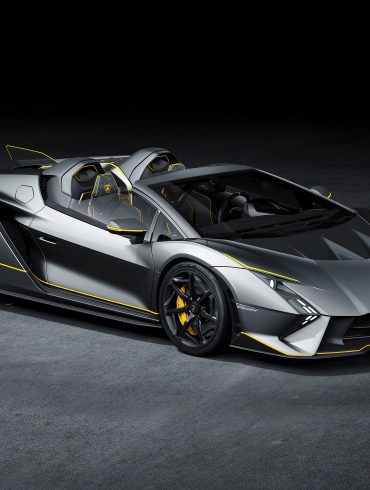Lamborghini Squadra Corse today launches its first hybrid endurance racing prototype, the SC63, at Goodwood Festival of Speed. The SC63, which will begin testing within weeks, is set to compete in the Hypercar class of the 2024 FIA World Endurance Championship, including the 24 Hours of Le Mans, and in...
Lamborghini Race Cars
Lamborghini was not a manufacturer known for its racing heritage which is why there are no Lamborghini race cars in the early days of the brand. Since then, the brand has dabbled in the world of racing and more recently has focused on specific areas.
Full Model List / Models In-Depth / Image Gallery / Best Lamborghini Racer Cars
Every Lamborghini Race Car
Lamborghini was not a manufacturer known for its racing heritage which is why there are no Lamborghini race cars in the early days of the brand. There were several Diablo-based race cars in several classes but they weren't super competitive. Clearly with the Gallardos popularity, Lamborghini went racing and even created its own series. More recently however we see that the company has started to really invest in racing models for their customers. Lamborghini announced the Huracan Super Trofeo race car and its a cracker. The Lamborghini Super Trofeo is the one-make championship organized by Lamborghini Squadra Corse. There is also GT3 racing cars you can buy from Lamborghini. Unlike the Super Trofeo, the GT3 is a category raced in championships open to different constructors. Automobili Lamborghini competes with over 20 customer teams who have chosen the Huracán GT3 EVO as their racing car. Here is a look at all the Lamborghini race cars created throughout the company’s history including the ones that compete today. Lamborghini also launched the Lamborghini SC63 LMDh V8 Racer, built to help Lamborghini will compete in the pinnacle of endurance racing. It features an all-new twin-turbo 3.8-liter V8 engine and will enter iconic races including the 12 Hours of Sebring, the 24 Hours of Daytona, and the 24 Hours of Le Mans.
Lamborghini Diablo Jota
Lamborghini Diablo GT1 Stradale
Lamborghini Diablo SV-R
Lamborghini Diablo GT2
Lamborghini Diablo GTR
Lamborghini Murciélago R-GT
Lamborghini Murciélago RG-1
Lamborghini Murciélago LP670 R-SV
Lamborghini Gallardo GT3
Lamborghini Gallardo Super GT
Lamborghini Blancpain Super Trofeo
Lamborghini Gallardo Reiter Extenso
Lamborghini Gallardo ALMS
Lamborghini Gallardo LP 570-4 S/Trofeo
Lamborghini Huracán LP 620-2 S/Trofeo
Lamborghini Huracán GT3
Lamborghini Huracán GT3 Evo
Lamborghini Huracán Super Trofeo Evo
Lamborghini Essenza SCV12
Lamborghini SC18 Alston
Lamborghini SC20
Lamborghini Huracán GT3
Lamborghini Huracán Super Trofeo Evo2
Lamborghini SC63
Lamborghini Huracán GT3 Evo2
Best Lamborghini Race Cars Ever Created
We Pick The Five Greatest Bugatti Racers
In contrast to his rival Enzo Ferrari, Ferruccio Lamborghini had decided early on that there would be no factory-supported racing of Lamborghinis, viewing motorsport as too expensive and too draining on company resources. He also did not want to build sports cars and race cars because that era was a time when racing was extremely dangerous and came with a real body count. After the horrors of WW2, he did not want to be responsible for ending young men’s lives over something so trivial as racing cars. Despite these early promises, the company did in fact create some interesting race cars over the decades, including its own racing series in the last decade or so. Whether you're a lifelong Lamborghini enthusiast or a curious newcomer, this list of the best Lamborghini race cars promises to ignite your passion and deepen your understanding of Lamborghini's role in motor racing.
1. Lamborghini Diablo Jota

Lamborghini built the Lamborghini Diablo Jota race car and sold it to privateers to go racing in GT1.
Why Is This The Best Lamborghini Race Car?
In the 1990s, Lamborghini wanted to get into GT1 racing. To do it, Lamborghini built the Lamborghini Diablo Jota race car and sold it to privateers. The car got new cams, upgraded ECU, a revised intake system, racing exhaust, fixed suspension, adjustable sway bars, plexiglass windows, more airflow via new air ducting, and a monster wing. The naturally aspirated V12 was good for 600 horsepower.
The exterior of the car is only changed slightly. The side intakes on the car are made of carbon fiber instead of aluminum, and the front spoiler is lower to accomodate the larger air intakes. The adjustable spoiler comes standard on the car. Lamborghini also had OZ-Racing make custom magnesium 18-inch wheels. Lastly, 30th anniversary logos are placed on the rear grill.
Overall, 150 SE Diablos were produced, with 12 of these being converted to Jota specifications.
2. Lamborghini Huracán Super Trofeo Evo
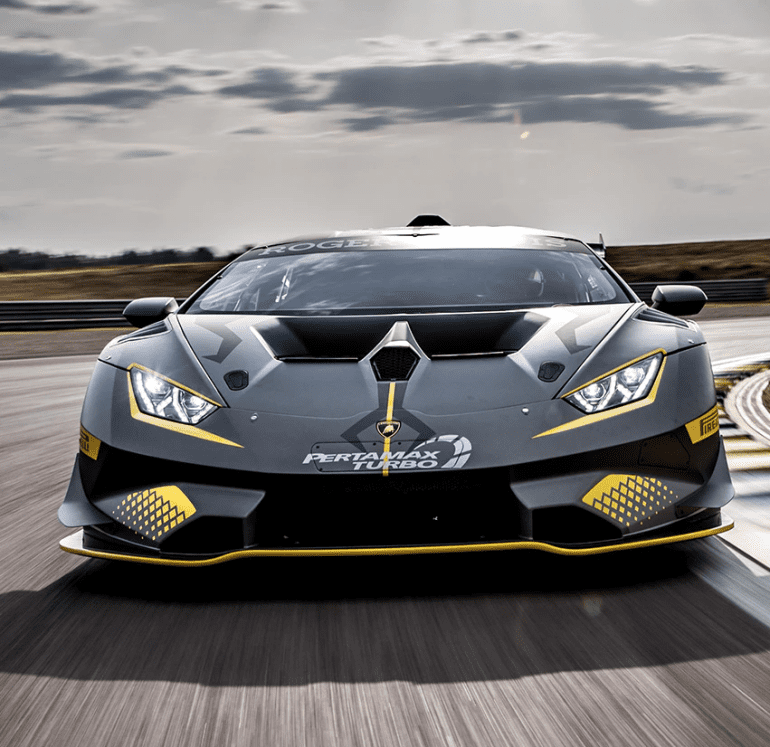
The series involves exclusively Huracán Super Trofeo Evo model cars in 3 continental series: Europe, Asia, and North America
Why Is This The Best Lamborghini Race Car?
The Lamborghini Super Trofeo is the one-make championship organized by Lamborghini Squadra Corse. The series involves exclusively Huracán Super Trofeo Evo model cars in 3 continental series: Europe, Asia, and North America. It is contended in two 3-race rounds. The three continental series all have a common format: 6 double races, each 50 minutes long, on the world’s most prestigious circuits.
The Super Trofeo Evo features a completely redesigned aerodynamic package. Developed in collaboration with Dallara, one of the most respected names in motorsport engineering, the car boasts a new body kit that improves aerodynamic efficiency, downforce, and cooling. The most striking feature is its large rear wing, which, along with the diffuser and front splitter, contributes to exceptional aerodynamic balance and stability at high speeds.
Under the hood, the Super Trofeo Evo is powered by the same 5.2-liter naturally aspirated V10 engine found in the standard Huracán, but it's tuned for racing. The engine produces approximately 620 horsepower and is paired with a six-speed sequential gearbox.
Being a part of the Lamborghini Super Trofeo series, owning a Huracán Super Trofeo Evo offers a unique level of exclusivity and prestige. Drivers get to participate in a highly competitive racing series, showcasing their skills in some of the world's most prestigious circuits.
3. Lamborghini Diablo Evolution GT1
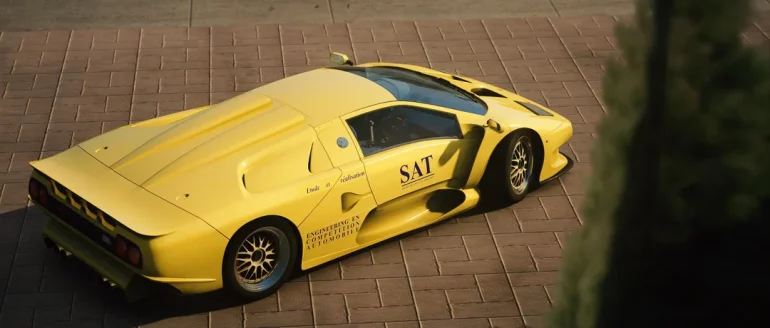
Based on a production car, but with a completely race oriented setup. Yeah, it was road legal.
Why Is This The Best Lamborghini Race Car?
During 1996, Automobili Lamborghini SpA contacted SAT in France to design and build a race version of the Diablo to be able to compete in the GT championships, much like the Porsche GT1 from 1997, this was a car that needed to be based on a production car, but with a completely race oriented setup.
A special 6-Liter engine was created with an enlarged stroke, later another evolution of this engine would be used in the Diablo GT and the VT 6.0 production model. By using a reprogrammed injection system this engine reached 655 Bhp driving the massive 18 inch rear wheels only.
Only two GT1’s were ever built, chassis numbers VLA12001 and WLA12000, the first one was sold to the JLOC in Japan and they have been using it to compete in the Japanese GTC ever since 1997. The second Diablo GT1 was finished in bright yellow and remained the property of SAT, were it was being displayed at their factory.
From the 1998 season on, the Japanese Diablo GT1 received small fins at both sides of the front bumper to increase down force. Also the front hood now incorporated air extractors to allow the air to pass through the front mounted oil cooler, the side windows were replaced by Plexiglas units and used a small sliding part and three air outlets were cut into the rear part of the window.
The entire rear section of the Diablo GT1 could be removed to allow easy access to the massive V12 engine, this engine received two air intakes just behind the roof section to draw cool air inside, special outlets were built into the rear cover to allow an air current through the compartment with the bodywork in place.
4. Lamborghini Essenza SCV12

Only 40 of these SC-V12 were built, and their owners became members of an exclusive club. Hypercar racing?
Why Is This The Best Lamborghini Race Car?
In comes the Lamborghini Essenza SC-V12, the new limited edition track-only hypercar developed by Lamborghini's in-house racing department, Squadra Corse, and featuring a design from the Centro Stile studio ... only 40 of these SC-V12 will be built, and their owners will become members of an exclusive club with access to bespoke programs.
The heart of the Essenza SCV12 is its 6.5-liter naturally aspirated V12 engine, which is the most powerful V12 engine ever produced by Lamborghini. It delivers over 830 horsepower, thanks to aerodynamic supercharging at high speeds, a feature that increases the car's dynamic air pressure as its speed rises, enhancing engine performance.
The interior is stripped down and focused, equipped with a racing seat, a multifunction steering wheel inspired by F1 cars, and a sophisticated telemetry system. The car is fitted with slick Pirelli tires and comes with an advanced push-rod rear suspension system installed directly on the gearbox, enhancing its track performance.
Owners of the Essenza SCV12 become part of an exclusive club that offers access to special driving programs to drive their hypercar on the most prestigious circuits in the world. The program includes storage service in a new hangar built in Sant’Agata Bolognese. Each car has a personalized garage and dedicated services, including webcams to allow customers to monitor their cars 24 hours a day using an app.
5. Lamborghini Diablo GT2

The Diablo GT2 was developed to compete in the GT2 category of the FIA-GT Championship in the 1997 season.
Why Is This The Best Lamborghini Race Car?
The Lamborghini Diablo GT2 is a pure GT racing car developed to compete in the GT2 category of the FIA-GT Championship in the 1997 race season.
Knowhow gained from the Diablo SVR in European one-make races, and the series of Diablo GT1's that were produced for the All-Japan Grand Touring Car Championship (now the Super GT) were utilised for the development of the car. Many of the body panels were replaced with carbon-fibre components to reduce weight, and a large front spoiler and a carbon rear wing were added to improve its racing aerodynamics.
For the first time for a Lamborghini-developed Diablo, the engine displacement was raised to 5,992 cc. The variable intake system, titanium connecting rods and special camshafts raised the power to 631 BHP.
In 1999, it was rumored to participate in the Le Mans 24-hour race from the Swiss team Garage R Affolter, but it never happened. With a change of plans involving Audi becoming the parent company in 1998, it all ended without ever fully participating in the FIA-GT Competition.
It did lead into the production of the limited edition roadcar, the Diablo GT, and the Diablo GTR used in the one-make 'Diablo GTR Super Trophy' competition. In addition, it had a major influence on the development of the final production 6.0, making the GT2 an important part of Diablo history.


